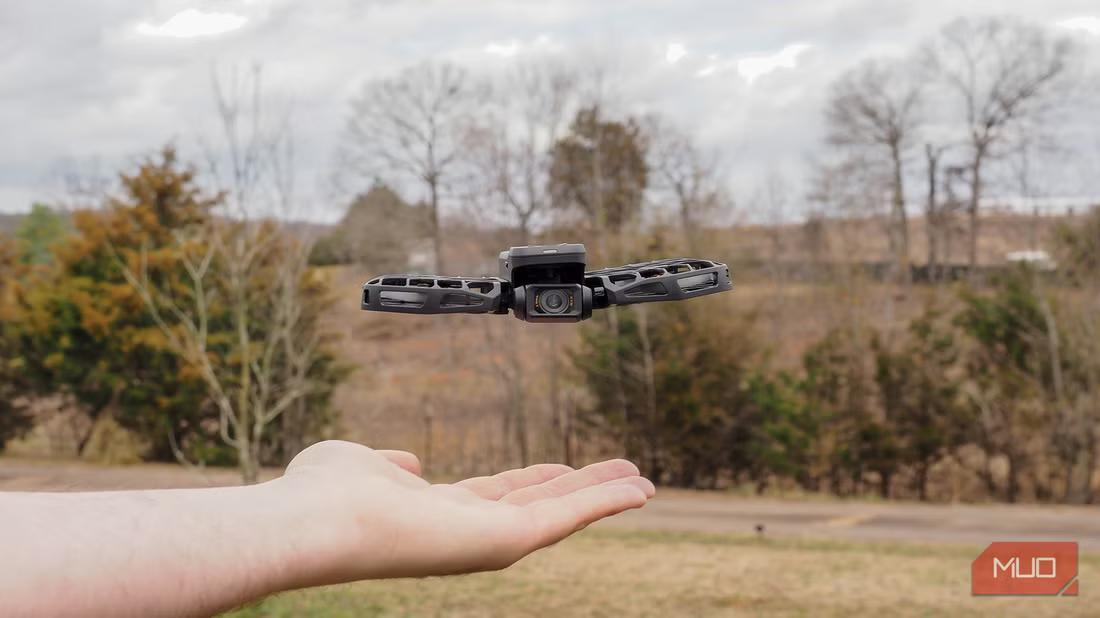
HOVERAir X1 PROMAX Review: Autonomous Drone Handles the Camera Work for You
|
|
Time to read 7 min
|
|
Time to read 7 min
When looking for a drone that balances creative autonomy with more powerful features, the HOVERAir X1 Promax aims to tackle all the wishlist items of its successful predecessor, the HOVERAir X1. This beefing up comes with its 8K video capabilities, OmniTerrain system, and rear active collision detection, which still comes wrapped in its portable, foldable design. Despite improvements that push the limits of this autonomous drone's abilities, the improved, albeit still limited, battery life still sets some hard limits.
Beyond the limits that correlate to its smaller footprint, the customization options make the HOVERAir X1 Promax versatile for a wide range of users. Whether you're looking to shoot video content without extensive oversight or want a safer introduction to drone flights, the improvements reduce many of the typical anxieties.
HOVERAir X1 Promax
Brand HOVERAir
App HoverX1
Speed Up to 26 mph (auto-follow speed)
Weight 192.5 grams
For a small drone, the HOVERAir X1 Promax provides powerful features including 8K video capabilities, rear active collision detection, follow speeds of up to 26 mph, and all terrain use via OmniTerrain. As with its predecessor, filming can be accomplished with just the drone and its on-device controls. Smartphone and remote control options are available to tweak to its users' needs, especially when pushing further with its newest features.
The HOVERAir X1 Promax is available to order on HOVERAir's website and Amazon in either the Pro (4K) or Promax (8K) variety, along with several combo packages based on intended use. The standard version of the Promax starts at $699 with each combo package increasing in cost to upwards of $1,620.
| Brand |
HOVERAir |
| App | HoverX1 |
|
Speed |
Up to 26 mph (auto-follow speed) |
| Weight |
192.5 grams (~0.4 pounds) |
|
Range |
Phone (app) - 500 m, Beacon - up to 1 km |
|
Connectivity |
USB-C, Wi-Fi |
| Battery |
1920 mAh smart battery |
| Dimensions |
Folded: 105 x 149 x 34 mm (~4.13x 5.86 x 1.34 inches) |
|
Video Resolution |
Up to 8K/30fps |
|
Bitrate |
160 Mbps (max @ 8K/30fps) |
|
Live View |
Yes |
| Max Wind Speed Resistance | 10.7 m/s / 24 mph (level 5 wind) |
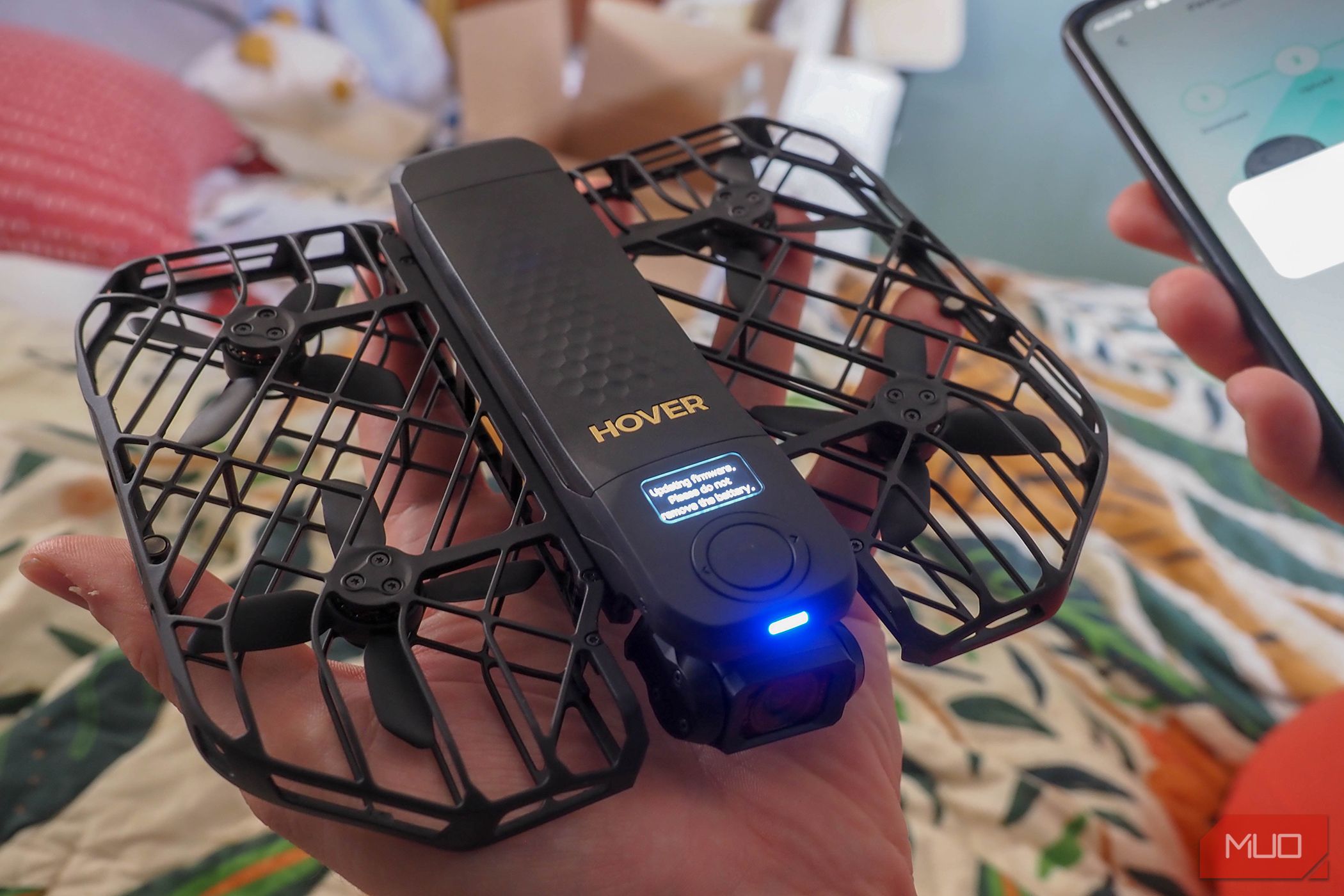
For those who have previously used the HoverAIR X1, the fundamentals of the drone haven't changed much. The less-than-a-pound drone folds up to pocket-sized dimensions to increase its portability, and the encased propellers provide a buffer that's surprisingly resilient. Once you've either charged the drone or its batteries via a combo-package charger, the X1 app will have an update to get your drone up to snuff before its first flight.
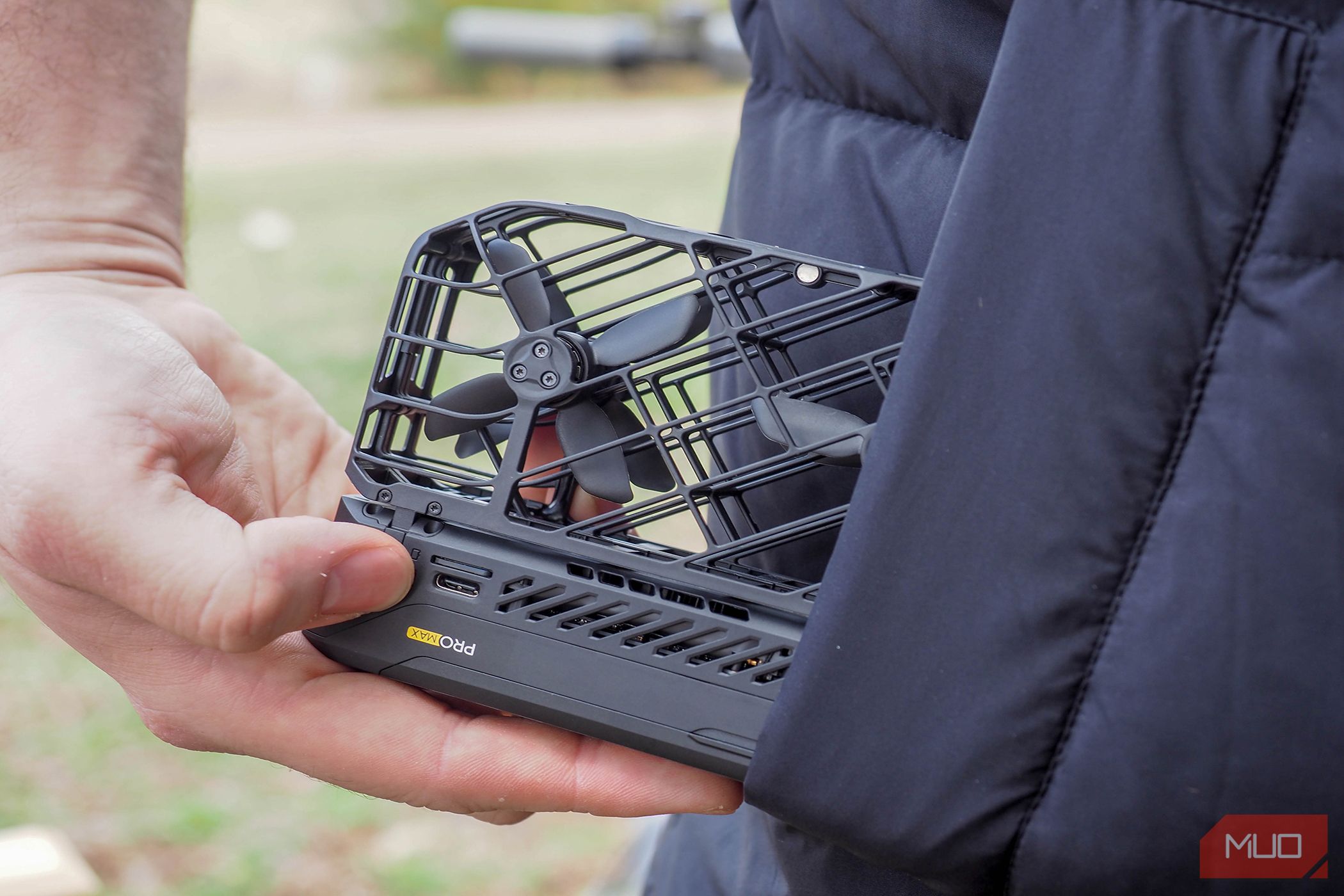
While the main power button and select button can handle the majority of the flight prep alongside the OLED screen, you'll still need some access to the X1 app to fine-tune more settings and access all of your footage.
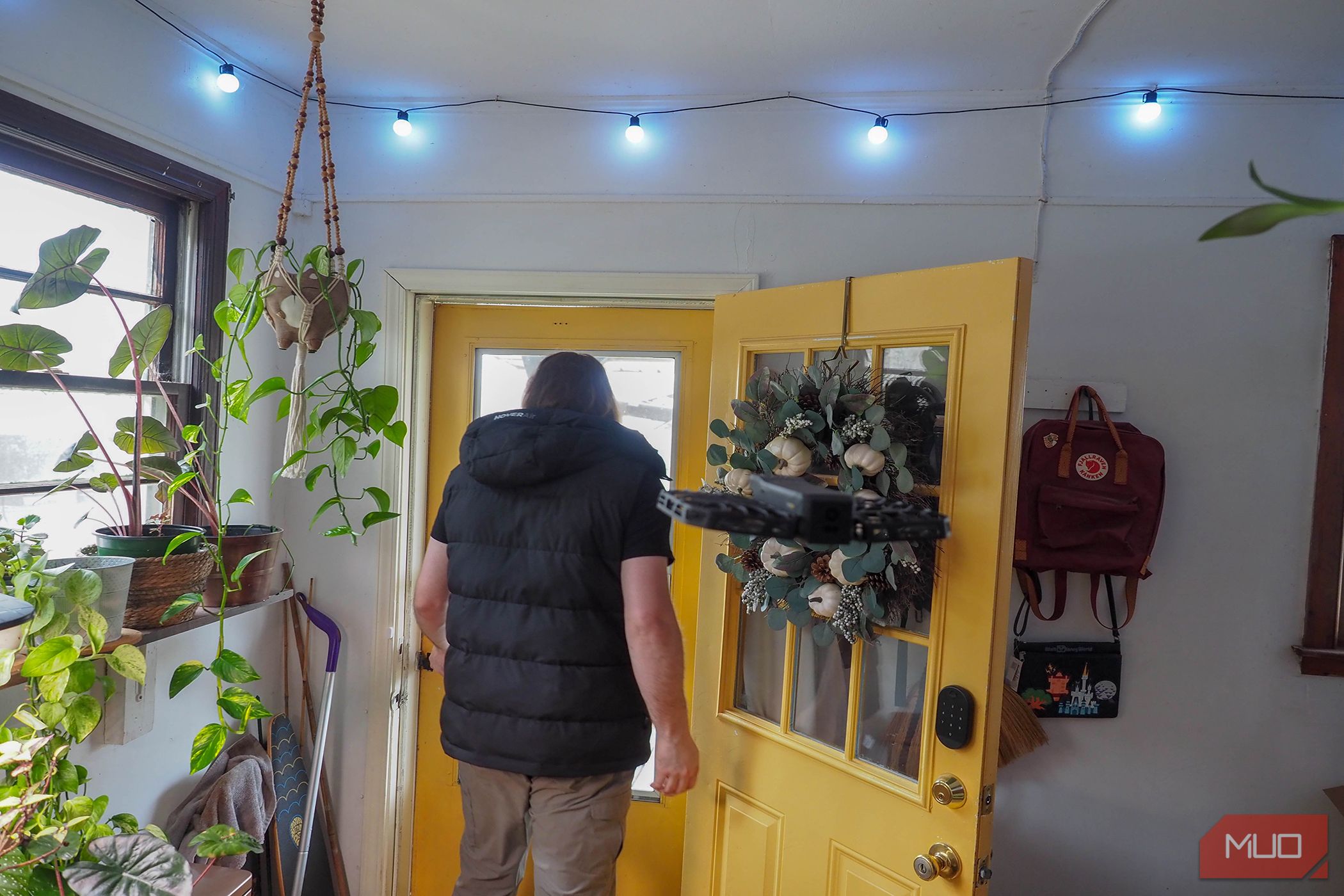
While the HoverAIR X1 can handle the indoors, a dedicated indoor follow mode helps round out the more action-based ski and cycling modes for the drone. For those looking to get an understanding of the drone's capabilities when tracking, this serves as an easy test without much risk to the drone should any hang-ups occur.
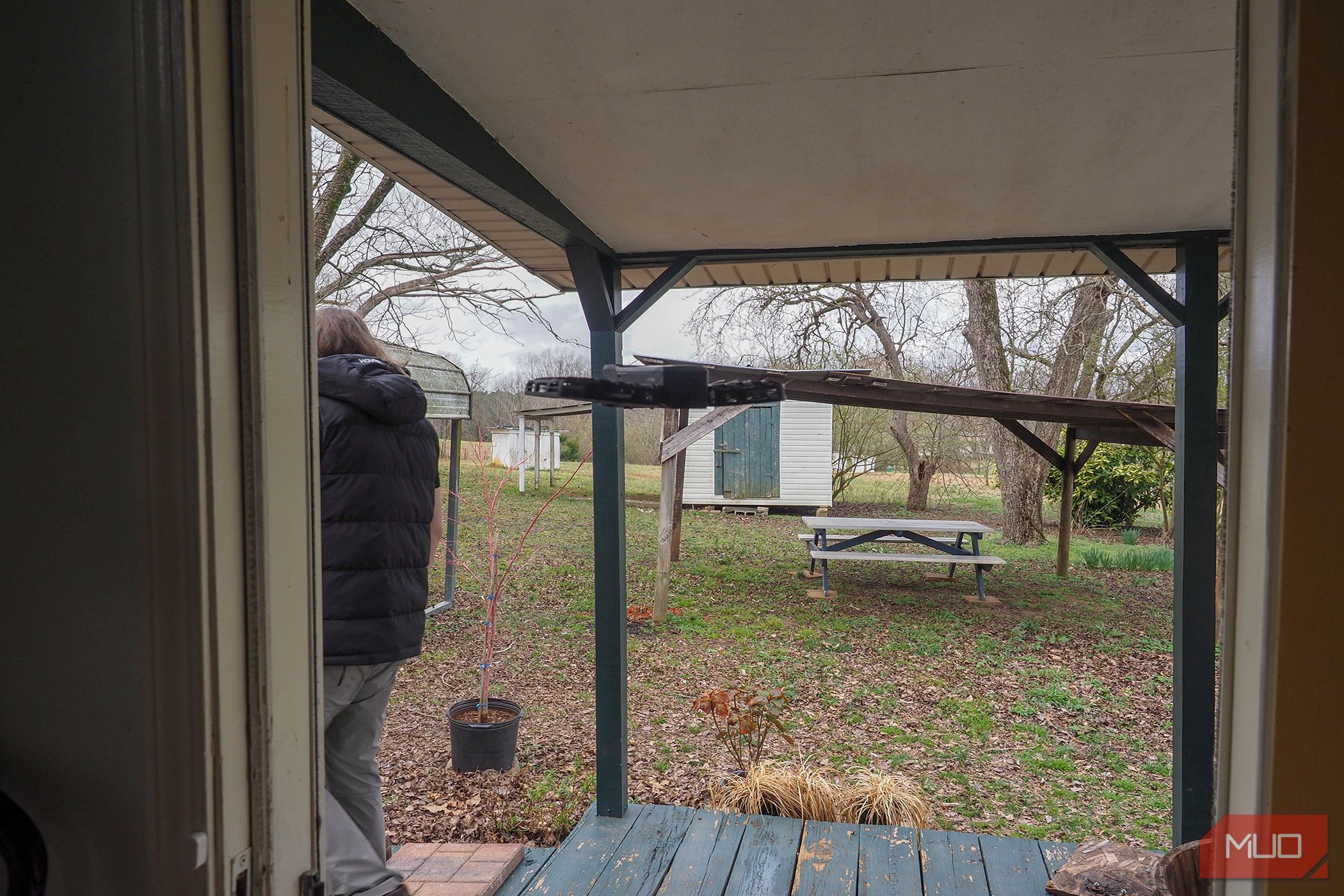
In practice, if you can anticipate the drone's following rate, you won't run into any issues. The drone needs a moment to catch up when abrupt directional changes occur, but it does a good job of avoiding tight spaces, especially with a good facial connection at launch. Even in dimmer or overcast lighting, the drone followed fine as long as it had a solid target lock-on.



Beyond accessing your flight and general drone settings, the Hover X1 app (available for Android and iPhone) mostly serves as a way to quickly preview what's on the drone, especially if you're not using a microSD card (up to 1 TB). While there's also the option to view a social tab, check out no-fly zones, or look at some general information on the flight modes, these don't have the best implementation, and better versions could be found elsewhere.
The in-app manual flight mode still allows for a quick introduction to more control for those not purchasing a more expensive package outright, but you'll still find the experience much more refined when using the joysticks.
During testing, I also ran into an issue with my recordings not including sound when done via the app despite ensuring the sound recording option was enabled. While not much better, the audio that was recorded when using the beacon was saved separately as an audio file. While you can manually attach the audio, there were still issues with the noise cancellation model failing to remove the propeller noise.
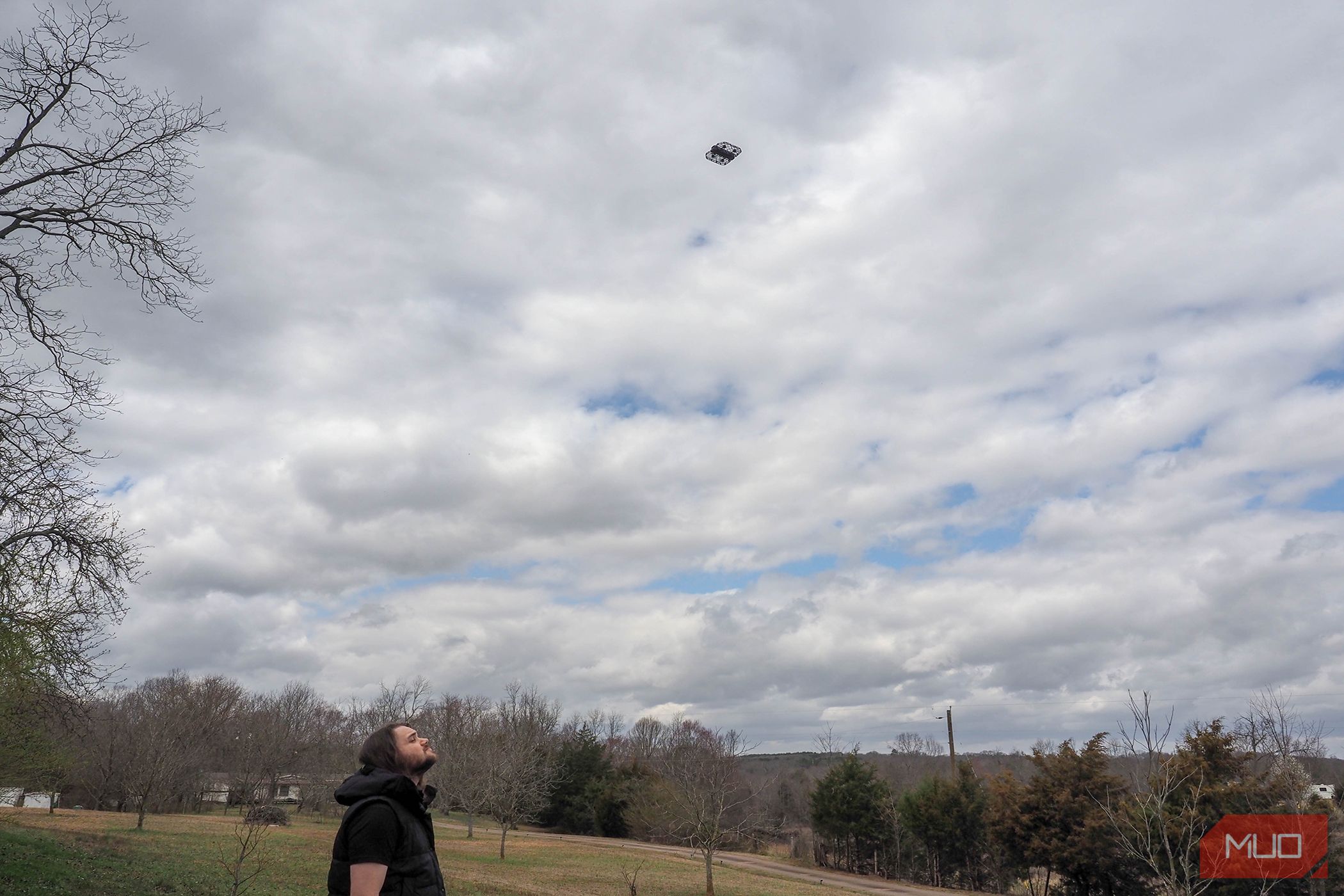
The core benefit of the HoverAIR Promax is that the essential drone flight mechanics have all been strengthened with this release. The max flight time has been extended up to a potential sixteen minutes, there's a max flight following speed of 26 mph, and the addition of OmniTerrain to handle confusing terrain like snow, water, and jagged surfaces.
When launching from your hand using one of the presets, some of these features are more apparent than others, but you'll notice the majority best when undertaking your own manual flight.
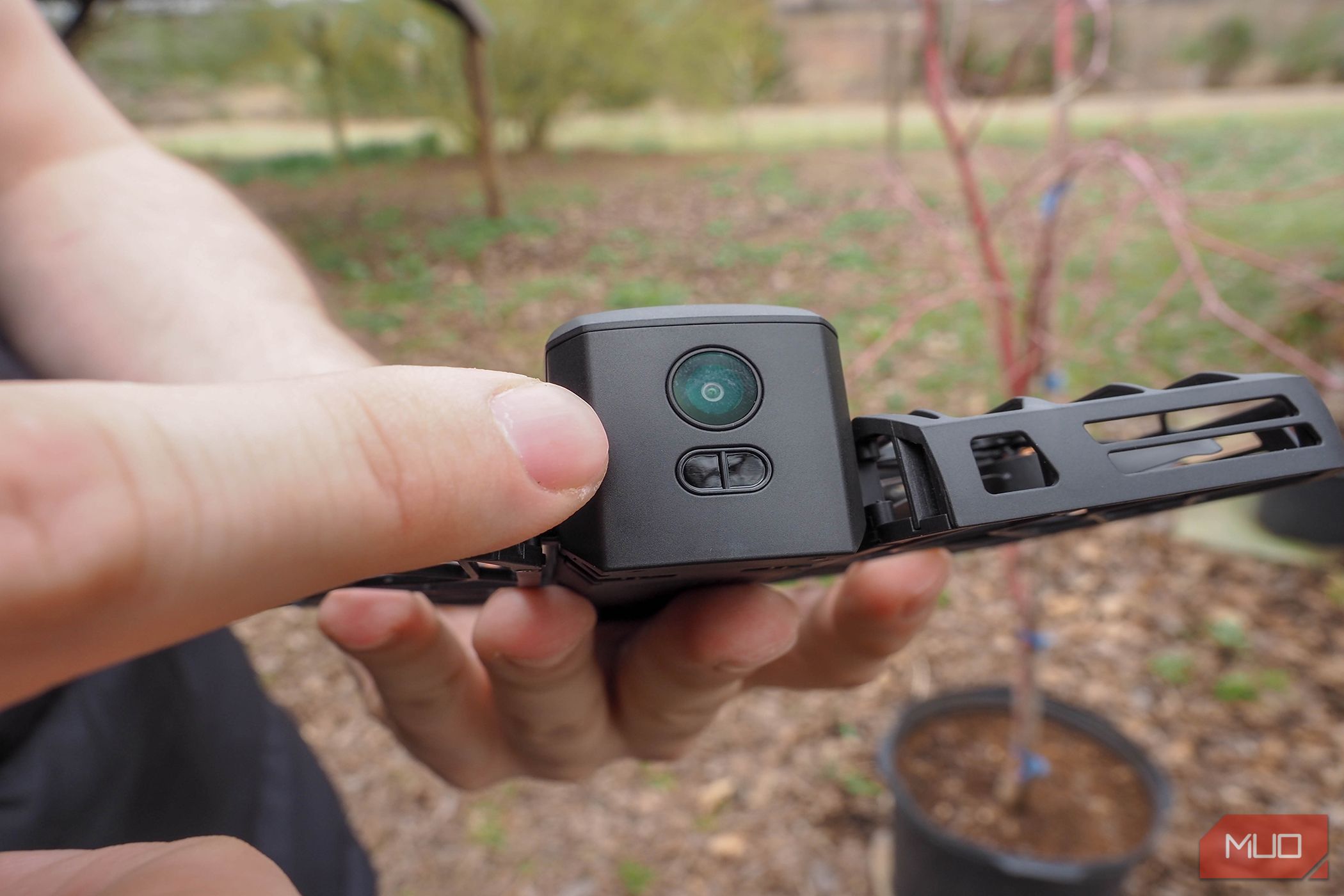
As with indoors, I appreciated the inclusion of the rear proximity sensor and visual sensor on the Promax. When testing around my home, there were a variety of tree placements and heights to contend with, so a previous concern with the X1 was the drone backing up into one of the layers of branches.
Thus far, the rear sensors have done an excellent job at avoiding problematic situations, and it's a feature you'll value if you've ever lived without them.

As with its predecessor, you'll also need to loosely monitor its battery life appropriately when undertaking flights. If the battery is too low, the drone won't take off, and it'll begin to return home or land in place once it reaches below 5% battery life.
Once OmniTerrain activates, some of the built-in safety limits, such as the default height restriction, are removed. During testing, heavier, more frequent wind gusts were commonplace, so I had to anticipate keeping at least one additional battery in tow to offset the diminished flight times.
If you want to take multiple flights per day, the 65W power adapter and charging hub can support parallel charging of two batteries at once. It takes 45 minutes to charge one battery and 60 minutes to charge both.
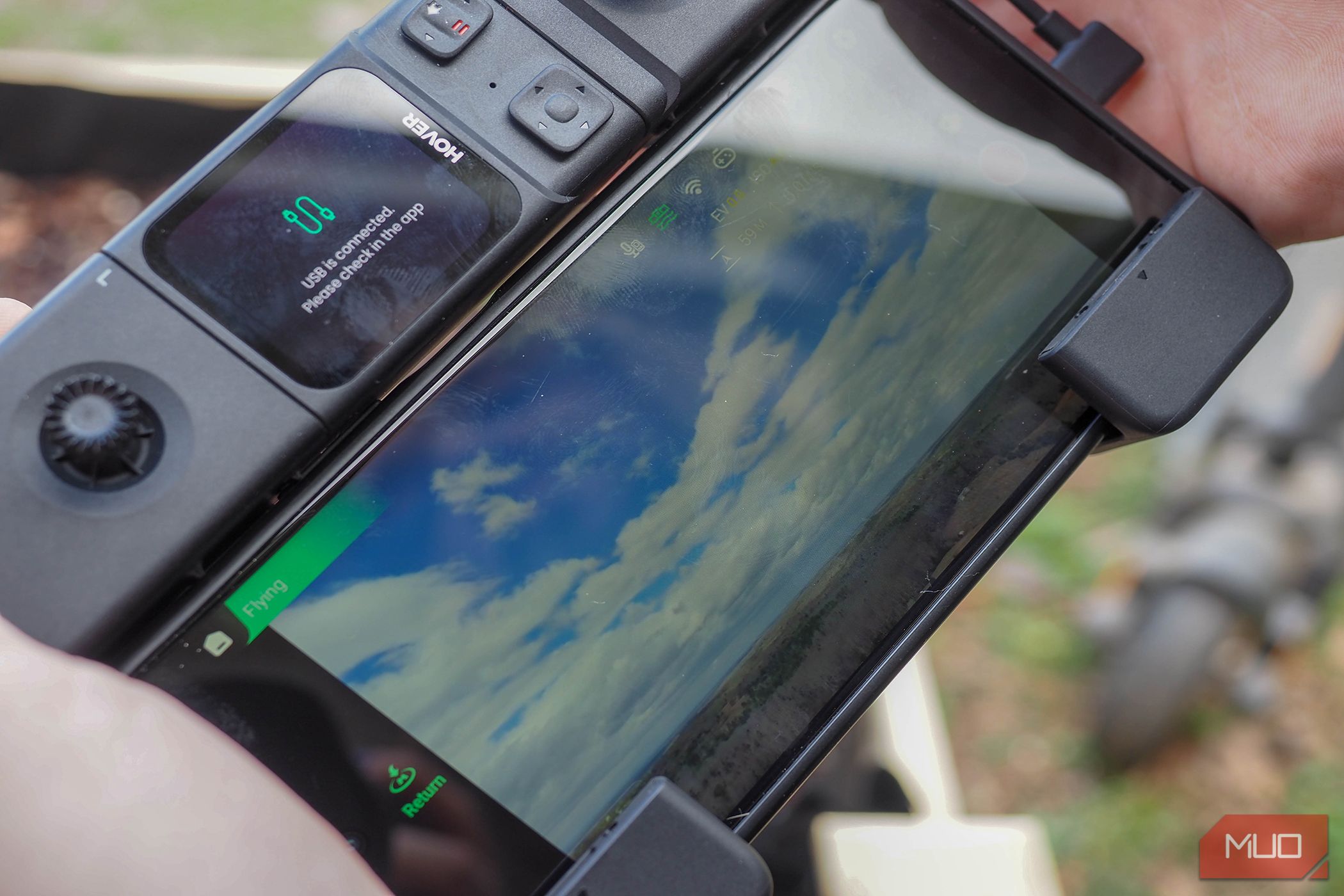
For those who purchase the beacon and joysticks, the drone can either connect to the beacon without a smartphone, or you can use your phone screen as a larger preview window when flying.
Regardless of which option you use, the beacon connects intuitively to the joysticks. The biggest struggle is fitting your smartphone into the holders. With the beacon, the maximum transmission range is 1 km, compared to 500 meters with the phone app (with even lower estimates on iOS).
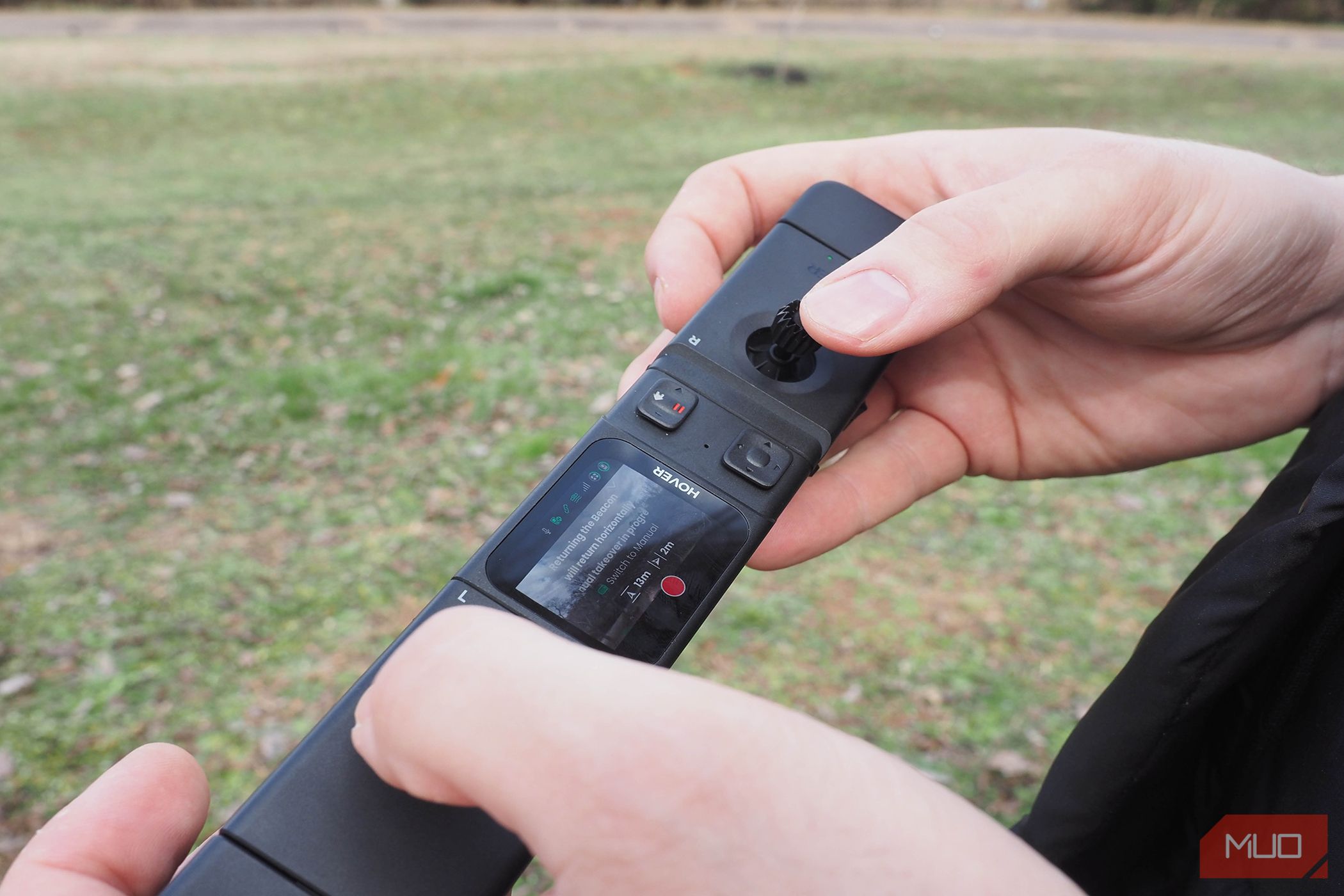
In practice, you'll find your transmission range won't be hitting those max targets since interferences and obstructions will play a big role. With the beacon, I'd typically get a little past 100 meters (usually around 130 to 150 meters) before I'd begin to notice that I'd need to get closer to the drone again after noticing some interference.
While the lower battery life already makes it so you don't want the drone to get too far from you, you also don't want to contend with a far-gone drone, especially if it hits winds past its resistance level and triggers a safety landing.
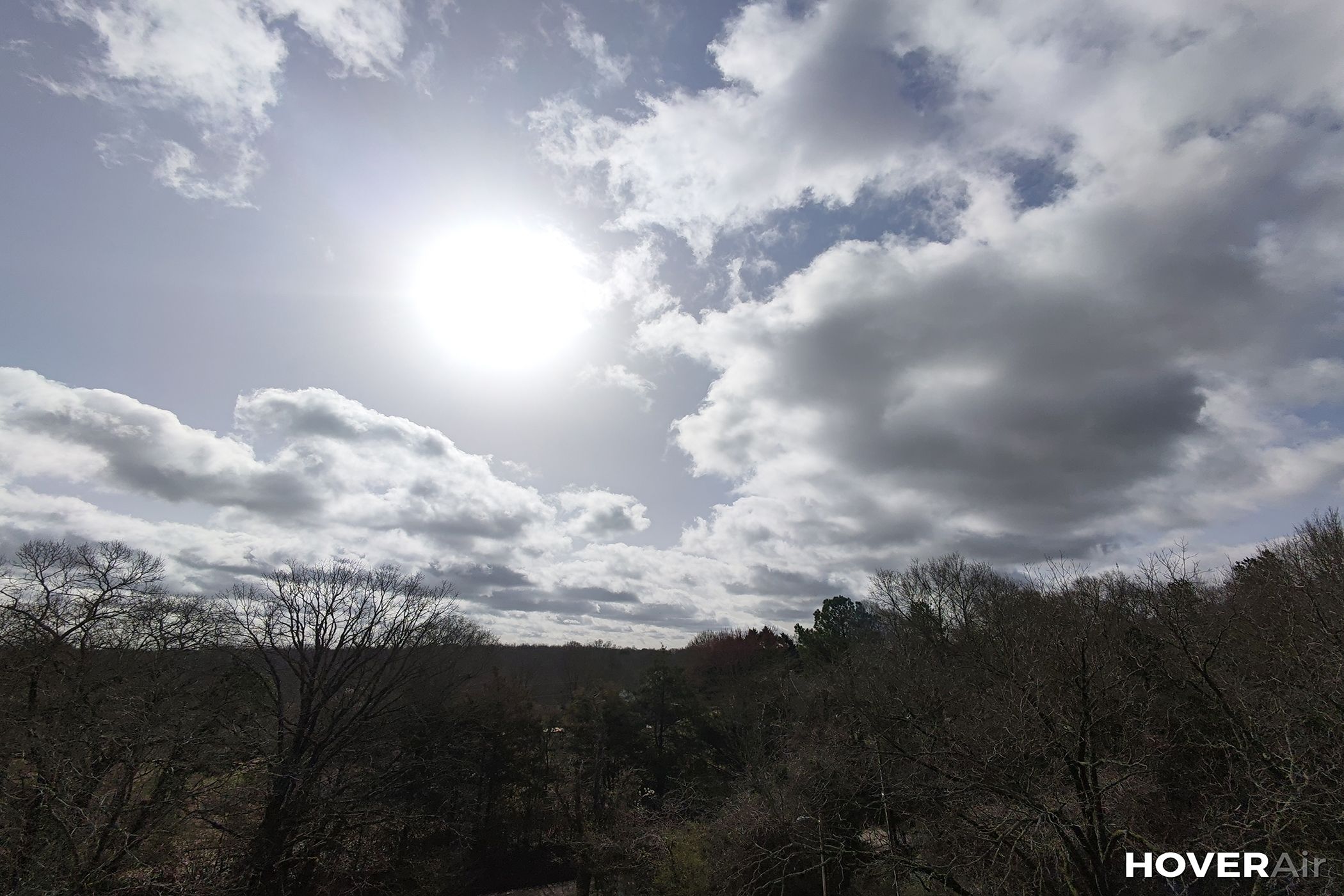
With the HoverAIR X1 Promax, there's a 1/1.3" CMOS sensor and a 16 mm wide lens with support for 8K (30 fps), 4K (120 fps), and 1080p (120 fps) with an MP4 video output. Video stabilization uses a two-axis gimbal and EIS.
The photo resolution is 12 MP / 48 MP, and in manual mode, you can also change the ISO and shutter. The customization here is relatively minimal, and it's almost expected that you'll clean up the photos independently.

As with its predecessor, the Promax's photo quality is adequate, but you'll mostly use it for its range of video options and automated shooting.
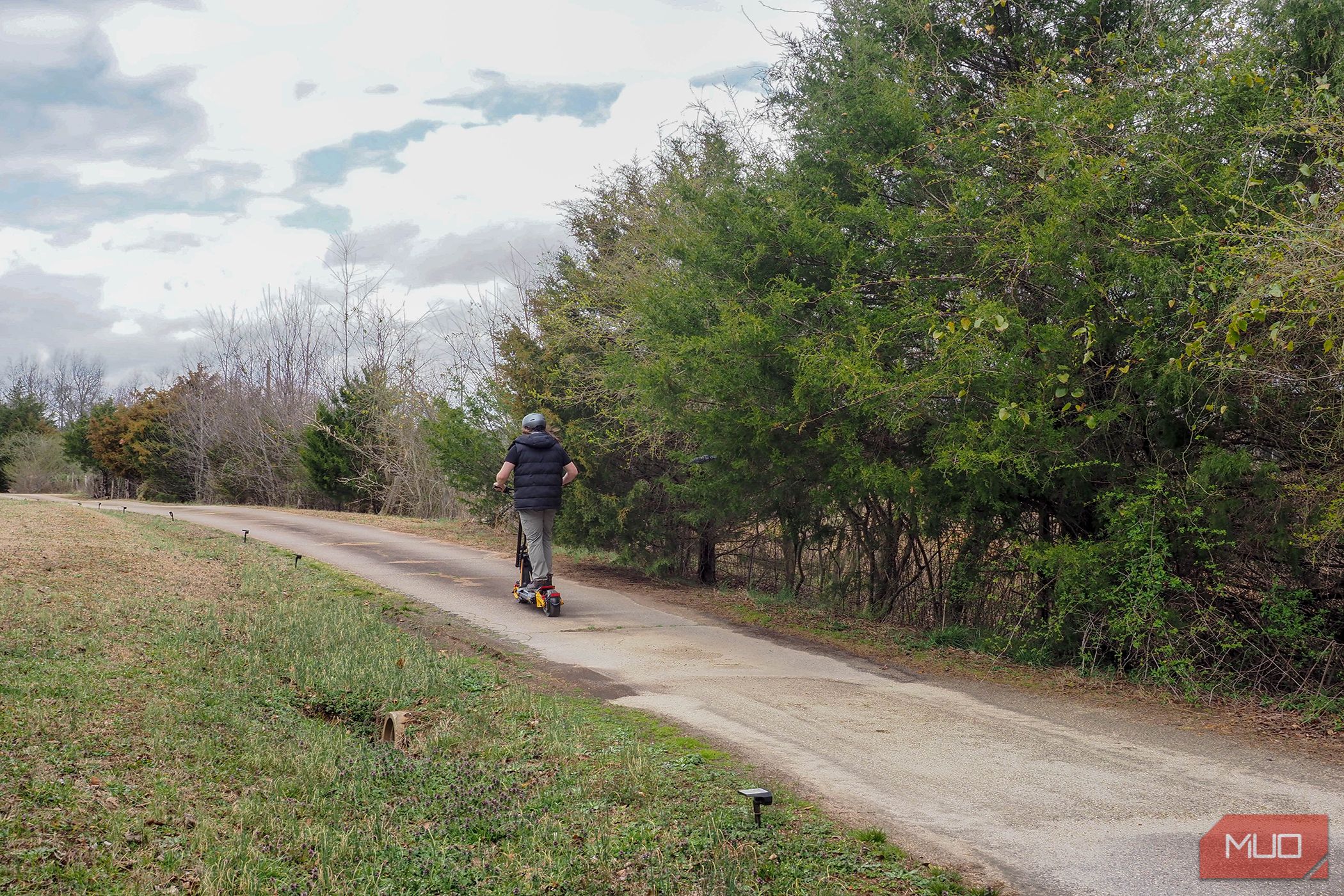
When considering the HoverAir X1 Promax, you'll want to weigh a few different factors. If the 8K video options are a strong selling point, the Promax's base package easily delivers there if you do not need extensive video. If your primary concern is a smaller footprint and palm-based launches, you'll have to weigh either the older X1 or the DJI Neo against the Pro or Promax.

The Promax also does have some minor hiccups that need to be handled, but these can easily be ironed out via updates for anyone willing to invest in its system. If you're willing to be patient, these minor roadblocks pale in comparison to the freedom offered between the preset flight modes and the features that round out manual flights with the Promax. If you're looking for a drone that offers a wide range of value that you can grow into more, the Promax is a worthy option.
The original source from: https://www.makeuseof.com/hoverair-x1-promax-review/https://www.makeuseof.com/hoverair-x1-promax-review/